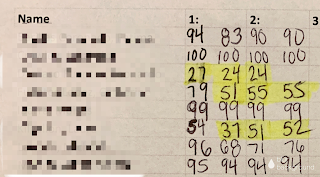I just uploaded my Beginning Art (Art 1) course for Visual Arts to Canvas Commons! If you use Canvas as your LMS, this should be easy for you to download and import into your own course.
Here is the link if you're interested: Beginning Art
About the course
Unit 1: Elements of Art / Principles of Design
This is an overview of the elements and principles. There are google slides that prompt students to take notes and create some basic examples in their sketchbooks. They analyze how the elements / principles are used in an artwork and there's a quiz at the end of the unit.
Unit 2: Classifying and Critiquing Art
This unit covers the classification of representational, abstract and non-objective artwork. Students also learn about different genres: still life, landscape, history paintings, portraits, etc. The four steps of critiquing an artwork (describe, analyze, interpret and evaluate) are deconstructed, and students have a chance to practice using them.
Unit 3: Element of Art: Space Practice
Students will learn about how artists use space in their work. Overlapping, aerial perspective, linear perspective, high/low placement, and size are all techniques that artists use to create the illusion of space. Students will learn to recognize these and exemplify them. There are tutorials in creating drawings of interior and exterior spaces using one and two point perspective and a tutorial on applying aerial perspective when using graphite and watercolor. At the end of the unit, students critique an artwork that uses many of the techniques they learned about.
Unit 3: Element of Art: Space Project
Students have the choice between two projects. Both projects require students to use the techniques they've been practicing to create an artwork that gives the illusion of a 3-dimensional space on a 2-dimensional surface.
Unit 4: Drawing Exercises
I used to teach this unit before the space unit, but many students find it easier to be successful in the space unit so I teach that one first to build their confidence. In this drawing exercises unit, students will learn a variety of exercises that artists use to strengthen their drawing skills: blind-contour drawing, contour drawing, and drawing upside down. They will learn how to draw ellipses and how to create thumbnail sketches. They'll put all of this together by drawing a still life that prompts them to arrange their own items, create thumbnail sketches and "block in" their still life during the beginning stages.
Unit 5: Value and Shading
Students practice shading with graphite by creating several value scales using blending, hatching, cross-hatching, and stippling. Then, they practice shading a variety of geometrical forms.
Unit 6: Portraiture and Grid Drawing
This unit breaks down how to draw each of the features of the face using correct proportions. After drawing a self-portrait from a mirror, students learn how to draw using a grid and a 2:1 ratio. The final project in this unit is a portrait applying their previously learned drawing and shading techniques.
Unit 7: Color, Texture and Final Exam
This unit is packed! Students learn about color theory and texture through several exercises. Then, they begin working on their final exam project that requires them to apply a lot of what they have learned throughout the semester.
Each project, and most assignments, have detailed rubrics and tutorial videos so that students can complete assignments at home if they have to be absent for any length of time. A virtual teacher could choose to use this entire course while another teacher may only choose to use portions. Hopefully it's helpful to most middle / high school art educators.
One more thing - At the beginning of the course are 4 modules that are not part of the units. The first module contains the syllabus and a few activities that I use at the beginning of the year when schedules are still being changed. The 2nd module houses my classroom clean-up schedule. Students sign up to clean different things in the art room throughout the semester, and this gives them ownership and responsibility over the materials. The 3rd and 4th modules are my "bell-ringers." When students first come in the classroom, they choose one of the drawings on their table to draw from. Each week, there are about 5-10 drawings on each table. They submit a photograph of their drawings at the end of the week.
I hope someone out there found this helpful! When I started teaching, I was so overwhelmed. I had 5 different course preps and there was NO written curriculum for my county - JUST the standards. I wish I had something like this put in place that I could tweak to make my own. If you have any questions about any of the material, feel free to email me!















.png)



































